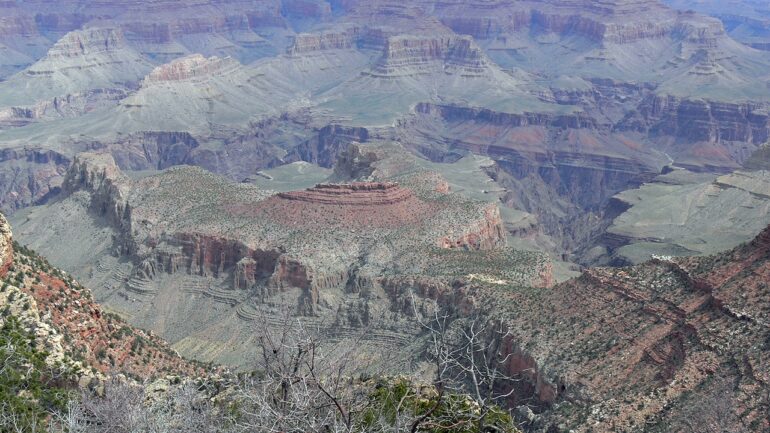The Grand Canyon’s valleys and millions of years of rock layers spanning Earth’s history have earned it a designation as one of the Seven Natural Wonders of the World. But, according to a new UNLV study, its marvels extend to vast cave systems that lie beneath the surface, which just might hold clues to better understand the future of climate change—by studying nature’s past.
A research team—led by UNLV paleoclimatologist and professor Matthew Lachniet—pulled an ancient stalagmite from the floor of an undisturbed Grand Canyon cave. By studying the mineral deposits’ geochemistry, they were able to analyze precipitation patterns during the rapidly warming period following the last Ice Age to improve understanding about the potential impact of future climate change on summer monsoon rains in the U.S. Southwest and northwestern Mexico.
Their findings, published Oct. 2 in Nature Geoscience, revealed that increasing levels of water seeped into the cave between 8,500 and 14,000 years ago, during a period known as the early Holocene when temperatures rose throughout the region. Using a paleoclimate model, the researchers determined that this was likely caused by intensified and expanded summer rainfall stemming from atmospheric impacts on air circulation patterns that more quickly melted the winter snowpacks and sped up the evaporation process that fuels monsoon rains.
This is significant, authors say, because most of the water currently infiltrating through the bedrock and into caves and aquifers—and contributing to groundwater recharge—comes from winter snowmelt. During the early Holocene, however, when peak temperatures were only slightly warmer than today, both summer and winter moisture contributed to groundwater recharge in the region.
The authors suggest that future warming, which could cause temperatures to rise above those of the early Holocene, may also lead to greater rates of summer rainfall on the high-elevation Colorado Plateau and an intensifying North American monsoon, the pattern of pronounced and increased thunderstorms and precipitation that typically occur between June and mid-September.
